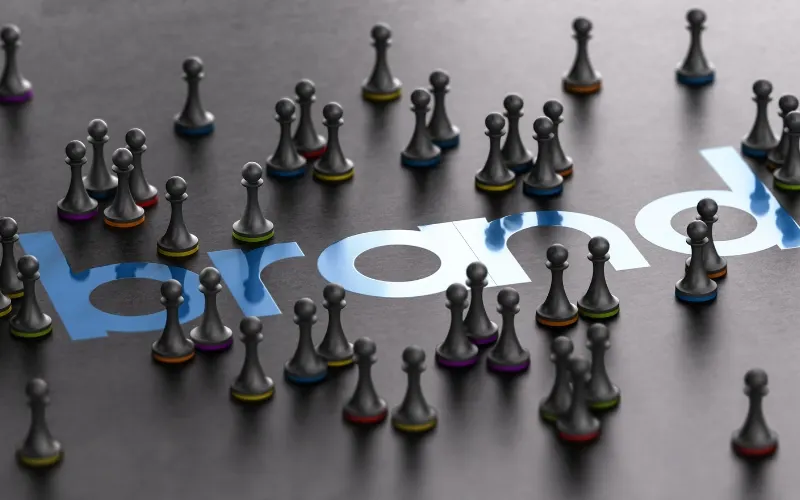Post Date: March 18, 2023

A competitive business environment is an essential part of many industries and organizations. It involves how different businesses compete in the market and how organizations adjust their strategies to remain relevant in the market. It involves promotional strategies, marketing channels, and pricing methods within a given market.
A competitive environment is a market in which multiple businesses offer similar products and services, as well as competing with each other in terms of pricing and promotional strategies. It is important to understand the different types of competitive environments, as they can have a significant impact on businesses and how they operate.
There are four main types of competitive environment: pure competition, monopolistic competition, oligopoly, and monopoly. In each type, businesses must adjust their strategies to compete effectively and remain relevant. Knowing how to excel in a competitive environment can help businesses successfully navigate the market and ensure long-term profitability.
How a Competitive Environment Affects Businesses?
A competitive environment can have a significant impact on businesses. Companies must adjust their strategies to remain competitive and continue to gain market share. Competition encourages businesses to enhance their products and operational efficiency, leading to a better customer experience.
Businesses can also use competition to their advantage by offering innovative products at affordable prices and engaging in growth hacking techniques to develop more beneficial products. Furthermore, competition can drive businesses to use various promotional strategies, marketing channels, and pricing methods to remain competitive. In this way, competition can be a positive force that helps businesses succeed.
Different Types of Competitive Environments
Pure Competition
This is a market with several competing businesses offering the same product or service. Companies in pure competition often have a large customer base and little market power.
Monopolistic Competition
In this type of environment, many competitors offer different products or services that can be similar or serve the same purpose. Companies in a monopolistic environment are price makers and can influence the prices of products and services.
Oligopoly
This market model is composed of a few businesses, usually at least two companies, that dominate the market. Companies in this environment usually collaborate rather than compete to achieve higher market returns.
Monopoly
In this environment, only one company produces a particular product. These companies don’t encounter competition as there’s usually no substitute for the product or service. Monopolists decide their product pricing and create barriers for newer companies trying to enter the market.
How to Thrive in a Competitive Environment
1. Prepare for Competition
Before entering a competitive environment, it is essential to prepare your business by researching the market and understanding the competition. Researching your competitors will help you understand their strategies and products, learn about their target audience, and determine how to differentiate yourself from them.
2. Identify Your Target Audience
To ensure success in a competitive environment, it is essential to identify your target audience. Knowing your ideal customer profile will help you align your branding and marketing efforts more effectively to the right people. Focus on understanding their interests and values to build meaningful connections with them.
3. Distinguish Your Brand
When customers compare products, they often make assumptions based on their understanding of a brand. Differentiate your business by creating an image that aligns with your target audience’s interests and values. This can help you stand out from competitors and build strong customer relationships.
4. Offer Positive Customer Experiences
Happy customers that receive excellent customer service and shopping experiences are likely to remain loyal to your business. Focus on providing positive customer service and experiences to keep customers returning, improving your brand reputation, profitability, and market share.
5. Leverage Growth Hacking
Growth hacking involves using a combination of marketing strategies to quickly grow a business. Utilize various tactics such as content marketing, search engine optimization, user experience optimization, and more to gain an edge over your competition.
6. Monitor Your Competitors
Continue to monitor your competitors’ strategies and products to stay ahead of the competition. Look out for industry trends, policy changes, and market regulations that may impact your business. Keep up with the changes to remain competitive in the industry.

Examples of Competitive Business Environments
7 Examples of Competitive Business Environments
Competition in business environments is essential, as it encourages companies to enhance their products and operational efficiency. Learning how companies function in different competitive markets can help you analyze industry trends, policy changes, and market regulations to make more informed business decisions. Here are seven examples of competitive business environments:
Smartphone Companies
Smartphone companies often compete in perfect competition, as there are numerous companies worldwide offering similar products. To succeed in this environment, businesses must develop new and innovative ideas with excellent marketing tactics.
Fast Food Businesses
Fast food businesses usually have many competitors, as consumers often crave burgers, sandwiches, chicken, or fries. This is a monopolistic environment because these businesses offer different foods with unique menus and varying recipes and flavors.
Post Office
Canada Post has a legal monopoly environment, meaning there’s no competition. This is because the law requires other companies to charge at least three times the regular posters to deliver letters or emails.
Retail Industry
The retail industry is a competitive market, with businesses often offering similar products or services to the same target audience. Companies must use various promotional strategies, marketing channels, and pricing methods to remain relevant.
Automobile Industry
The automobile industry is a highly competitive market with companies offering different car models with varying prices and features. When selling similar products, companies often differentiate their offerings by providing better customer service or higher quality vehicles.
Hotel Industry
The hotel industry is a competitive business environment, with many hotels competing for customers by offering different amenities and services at different price points. Hotels must also differentiate themselves from their competitors by providing unique experiences that set them apart from the crowd.
Banking Industry
Banks compete for customers by offering better interest rates and other incentives such as rewards points, cash back offers, and other promotions. Banks must also differentiate themselves from their competitors by offering innovative products and services that their customers may find attractive.
Conclusion: Understand Your Market and Work to Remain Relevant
To excel in a competitive business environment, it’s vital to understand the market dynamics, identify how competitors are operating, and remain relevant to customers. Researching the competition and understanding the customer profile can help you make informed decisions when creating products, setting prices, and marketing strategies.
Additionally, it’s essential to distinguish the brand and emphasize providing positive customer experiences to increase brand loyalty and market share. These steps can help businesses remain competitive and gain an edge over the competition.






